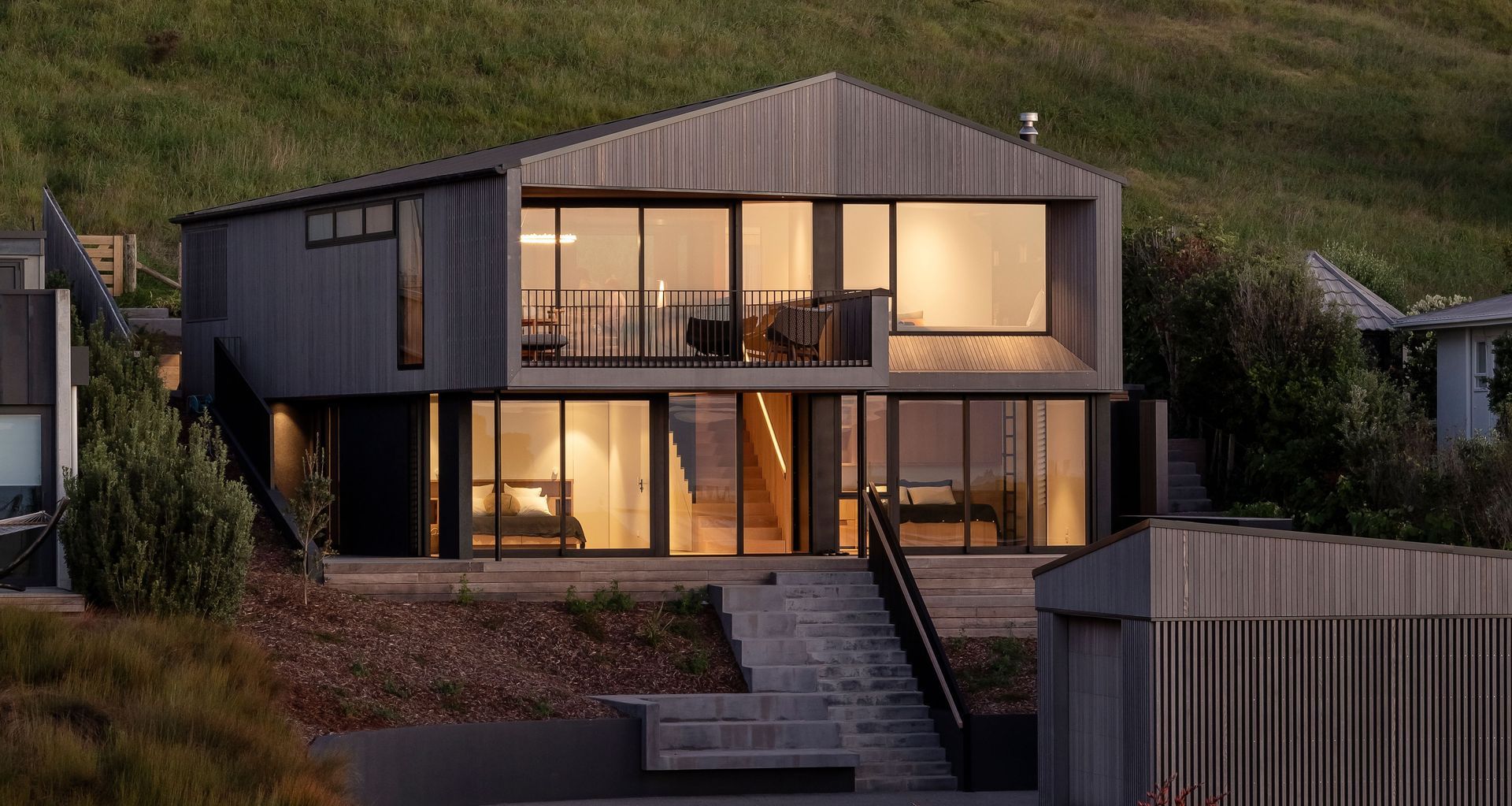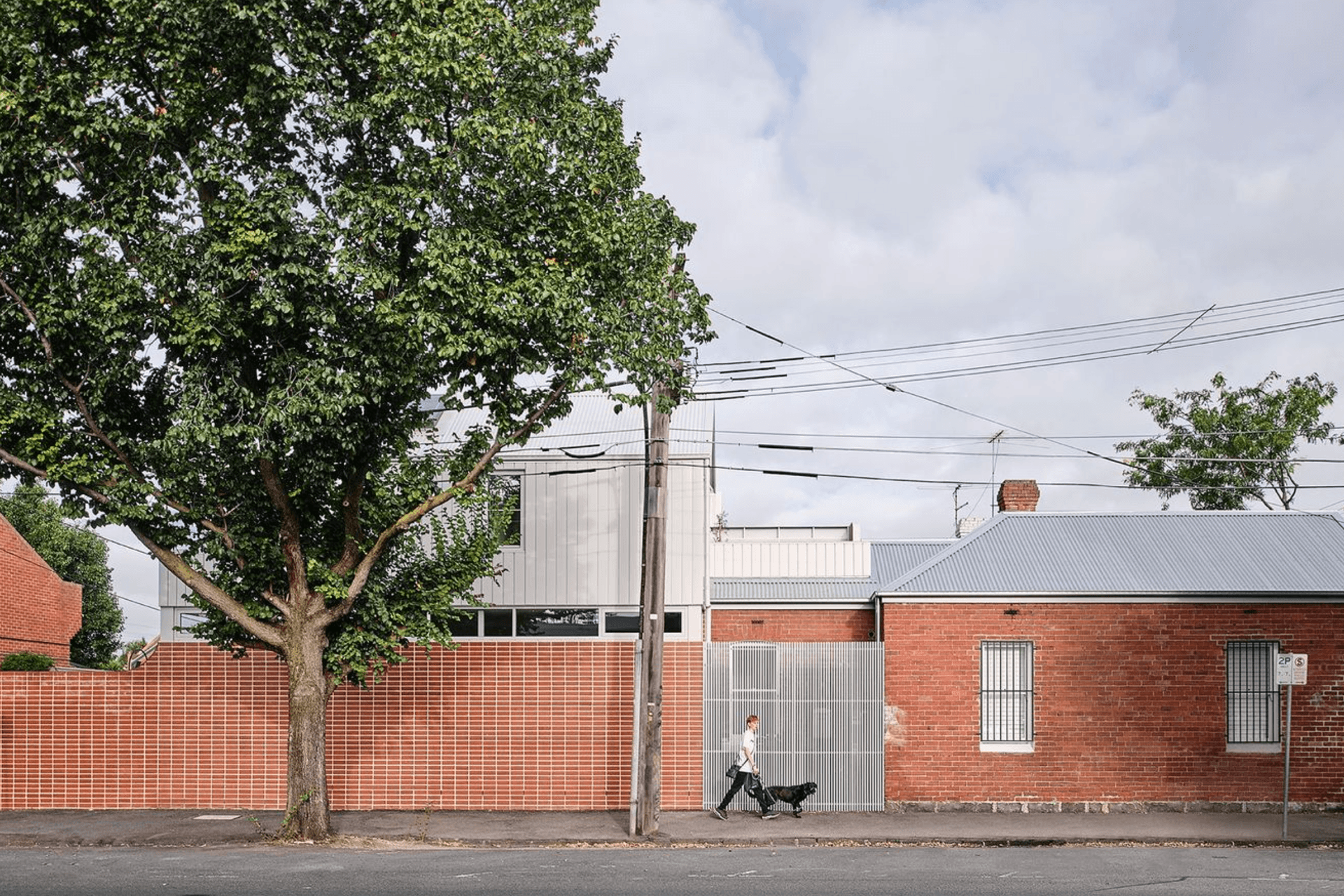Materiality & context: How to design a home that feels right
Written by
24 November 2025
•
5 min read


If architecture is about creating spaces for you to live within, then materiality is about the surfaces you will touch and interact with every day. When building a new home, thinking carefully about materials and how they respond to the site, your lifestyle and the local climate is just as important as planning the layout.
For architects Ben Lloyd and Mike Hartley from Lloyd Hartley, this process begins with understanding the people who will inhabit the home.
“It’s a pretty intimate experience designing a home for someone. Most people only do it once and clients are often with us for a number of years before they actually get to live in it, so we do get to know them quite well,” shares Ben. “Early on, we try to break down a few of those barriers to get people to tell us about who they are or who they want to be, because building a home is often an aspirational exercise."
Good architects take time to explore daily routines, habits, and aspirations to ensure the home supports the way clients want to live. This isn’t just about numbers of bedrooms and bathrooms, it’s about how a home functions during everyday moments, how it accommodates guests or extended family, and how it celebrates the times when everyone comes together, while allowing space for moments of solitude.
Understanding these key elements helps inform the layout, but materiality decisions come into play early on, too. At the outset, architects will consider both your preferences and how materials relate to the site and climate. Some clients have strong likes or dislikes (perhaps they love concrete or dislike bricks), while others are guided by practical concerns such as maintenance. The goal is to select materials that resonate with the home’s surroundings and complement its overall design, rather than forcing a particular style or trend.
And when clients find a material they truly love, says Mike, it can be a great starting point that drives other material choices. “Herne Bay Hideaway is a good example of this. In the beginning of the project, the clients fell in love with a particular stone for the kitchen, so our role from that point onwards was to ensure that all the other materiality resonated and was really considered in relation to that piece.”

Maintenance is another key consideration that often informs material selection. Durable, low-maintenance options like brick and aluminium are popular because they are fairly inert and require minimal upkeep. The right materials also offer tactility, enhancing your daily experience. Thoughtful surfaces, from warm timber handrails to textured stone benches, can make ordinary interactions more satisfying, while also creating a sense of comfort and cohesion.
“Architecture is an inherently tactile profession. We love the physicality of the art form and try to celebrate the moments in buildings where people come into contact with our work. We will often labour over the high-touch areas in our homes to bring a level of craft, material consistency, and hopefully appreciation for all the hard work that goes into constructing quality spaces,” says Ben
How materials meet, or junctions, is another crucial but often overlooked element of a home’s materiality. Well-considered junctions can elevate the design while also protecting from wear and weather, and clever detailing makes architecture feel refined and intentional, turning functional solutions into subtle aesthetic features.
"It’s a shift from thinking about detail as being just solving a construction problem to detail as being an opportunity to celebrate how elements come together," shares Mike.

The Hill to Horizon house is a great example of how the careful consideration of junctions can elevate the architecture; the second-storey overhang features a cavity construction where, typically, you would see the raw end grain of the cedar cladding and the white PVC cavity closer from underneath. To conceal the raw edge, the Lloyd Hartley team developed a flashing with a fine edge that meets the soffit, creating an elegant detail.
“When you look up you're seeing it as a seam – much like the cuff of a really well-tailored jacket or garment,” shares Mike.
Site and climate also shape material choices. Different regions require different approaches; for instance, timber behaves differently in humid Auckland compared with drier South Island locations. Understanding these factors ensures your home performs well over time and avoids problems such as warping, movement, or premature wear. A good architect will be able to tell you how different materials will perform in your site’s climate.
Regardless of location or site context, building a home involves many choices, but focusing on the intersection of context, lifestyle, and materiality can help homeowners make decisions that feel right. Thoughtful material selection, attention to junctions, and consideration of the site context will result in a home that is durable and comfortable for everyone who lives there.
"We take a holistic view of what a project's going to be,” shares Ben. “The brief, the site, and the materials are all in relationship with each other. Our job is to take those elements, celebrate the way they interact, and to create something unique and personal for every client."